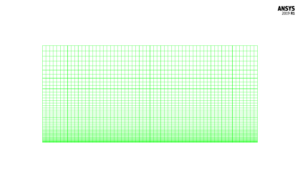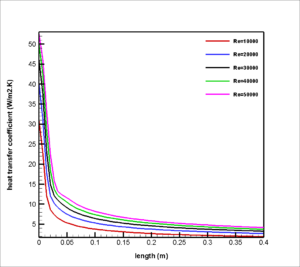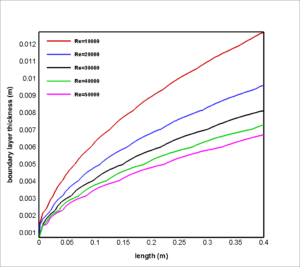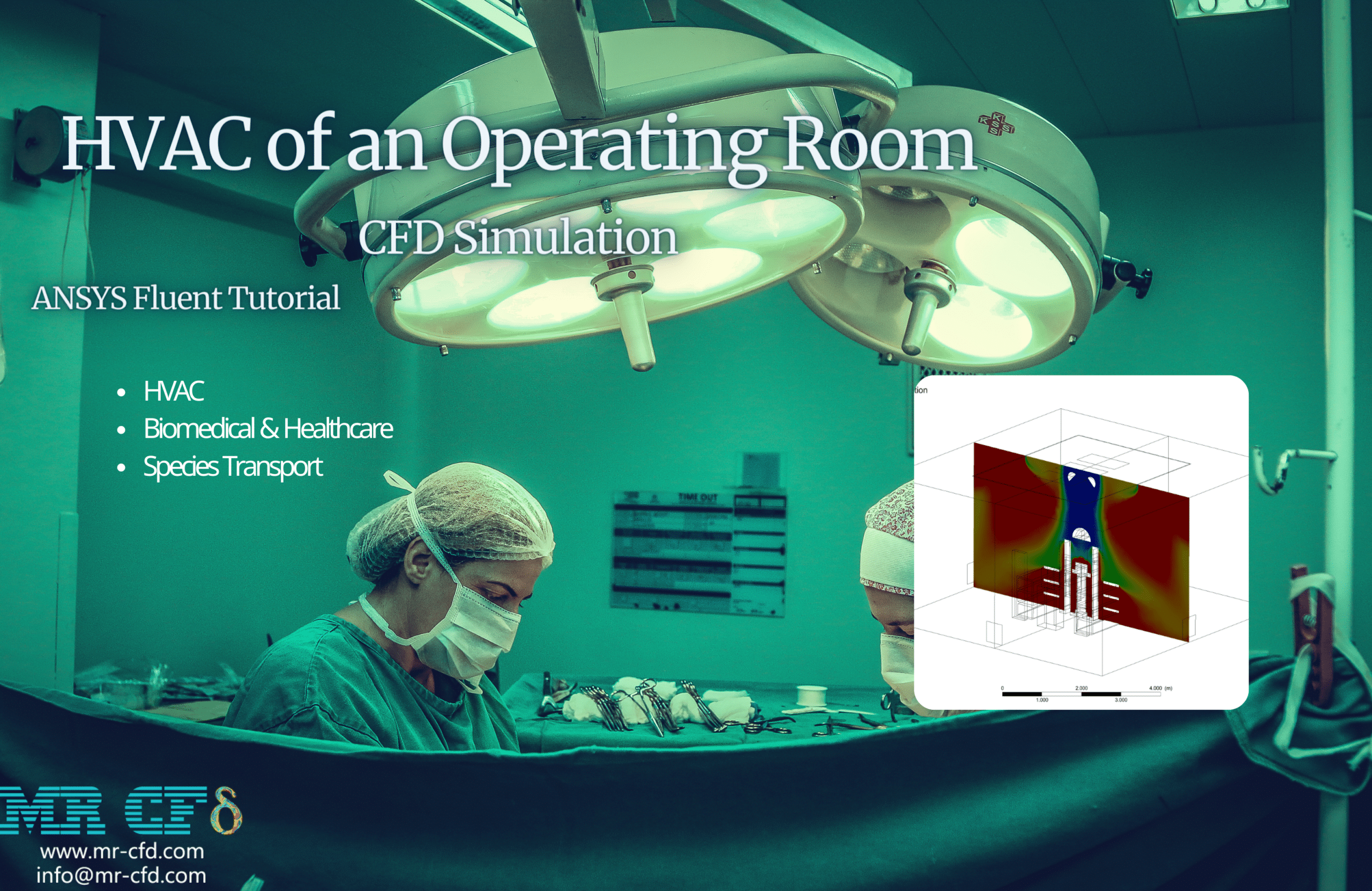External Flow Passing Through a Flat Plate, ANSYS Fluent CFD Training
Free
The present problem simulates the external flow of air passing through a flat plate five different Reynolds.
Click on Add To Cart and obtain the Geometry file, Mesh file, and a Comprehensive ANSYS Fluent Training Video.To Order Your Project or benefit from a CFD consultation, contact our experts via email (info@mr-cfd.com), online support tab, or WhatsApp at +44 7443 197273.
There are some Free Products to check our service quality.
If you want the training video in another language instead of English, ask it via info@mr-cfd.com after you buy the product.
Description
Project Description
The present problem simulates the external flow of air passing through a flat plate by ANSYS Fluent software. The operating fluid used in the simulation process is air, which has a density of 1.225 kg.m-3, a viscosity of 0.000017894 kg.m-1.s-1 and a thermal conductivity of 0.0242 Wm-1.K -1. The model is two dimensional; So that the lower edge of the model represents the plate and the two vertical edges on the left and right of the model are equivalent to the inlet and outlet of the air flow. The plate temperature is assumed to be a constant value of 333 K and the free air flow temperature is assumed to be 273 K.
The flow is also of the laminar type because the definition values for the Reynolds number are less than the critical Reynolds in the case of external flows on a plate. The values of the defined Reynolds are equal to 10,000, 20,000, 30,000, 40,000, and 50,000, respectively, which will determine the amount of incoming air velocity according to the relation related to the Reynolds number. The purpose of the problem is to study the airflow behavior on a plate and to investigate the velocity and temperature distributions as well as the hydrodynamic boundary layer.
Flat Plate Geometry & Mesh
The present 2-D model is drawn using Design Modeler software. This model consists of a simple rectangle in which the lower side represents the flat plate, the upper side represents the condition of symmetry, and the lateral sides represent the inlet and outlet of the open air flow. The following figure shows a view of the geometry.
(external flow)
The meshing of the model has been done using ANSYS Meshing software and the mesh type is structured. The element number is 3000. The following figure shows the mesh.
External Flow CFD Simulation Setting
To simulate the present model, several assumptions are considered:
- We perform a pressure-based solver.
- The simulation is steady.
- The gravity effect on the fluid is ignored.
A summary of the defining steps of the problem and its solution is given in the following table:
| Models |
||
| Viscous model | Laminar | |
| Boundary conditions (Flat Plate) |
||
| Inlet | Velocity inlet | |
| velocity magnitude | variable | |
| temperature | 273 K | |
| Outlet | Pressure outlet | |
| gauge pressure | 0 Pascal | |
| Walls | Wall | |
| wall motion | stationary wall | |
| Solution Methods (Flat Plate) |
||
| Pressure-velocity coupling | SIMPLE | |
| Spatial discretization | pressure | second order |
| momentum | second order upwind | |
| Initialization | ||
| Initialization method | (Flat Plate) | Standard |
| velocity (x,y) | variable | |
| gauge pressure | 0 pascal | |
| temperature | 273 K | |
External Flow Results
At the end of the solution process, two-dimensional contours related to temperature and velocity distributions, as well as two-dimensional velocity vectors, and diagrams of heat transfer coefficient and boundary layer thickness along the length of the plate are obtained. These results are obtained in all five different Reynolds.
(external flow )
(Flat Plate)









Margie Ward –
What is the main objective of this External Flow Passing Through a Flat Plate CFD Simulation?
MR CFD Support –
This simulation aims to analyze the airflow passing over a flat plate which is fundamental in understanding fluid dynamics and heat transfer applications.
Dr. Elroy Rohan –
Can this simulation be customized to model the airflow over different types of surfaces and wind conditions?
MR CFD Support –
Yes, we can accommodate your desired simulations. Please share more details about your specific requirements.
Prof. Amalia Rowe –
What is the benefit of using CFD for analyzing airflow over flat surfaces?
MR CFD Support –
CFD allows for detailed analysis of the airflow patterns over complex surfaces, providing insights that cannot be easily obtained through experiments or field measurements.
Prof. Cullen Wilkinson Sr. –
The comprehensive description of the CFD training for simulating airflow over a flat plate sounds very thorough. The assumption of laminar flow and the focus on boundary layer characteristics would provide critical knowledge for those working with similar aerodynamic problems.
MR CFD Support –
Thank you for your kind words! We are thrilled to hear that you found the airflow simulation training valuable. Understanding laminar flow and boundary layer dynamics is indeed critical in aerodynamics, and we aim to provide detailed and practical simulation insights that can be applied to real-world problems. Your recognition of our product’s thoroughness is highly appreciated!
Mr. Chance Reichert –
I am really satisfied with the way the flat plate simulation captures the changes in velocity and temperature. The results look extremely accurate!
MR CFD Support –
We’re thrilled to hear that you’re satisfied with the simulation results of airflow over the flat plate, and the accuracy of the velocity and temperature distribution findings. Thank you for taking the time to share your feedback, and we’re glad our product met your expectations!
Paolo Von –
I’m truly impressed with the level of detail in the flat plate simulation product! The description of the physics, boundary conditions, and results really showcase the depth of analysis possible. Learning about the hydrodynamic boundary layer and heat transfer coefficient was particularly insightful. Keep up the good work!
MR CFD Support –
We are thrilled to hear that you found our flat plate simulation training resourceful and insightful. It’s great to know that the details provided in the description helped you understand the concepts of hydrodynamic boundary layer and heat transfer coefficient thoroughly. Your feedback is much appreciated and motivates us to continue providing high-quality learning materials. Thank you for taking the time to share your positive experience!
Aimee Ernser –
The content on flat plate simulations was incredibly useful. I was able to follow along for a college project, and the provided definitions and explanations were crystal clear.
MR CFD Support –
We’re thrilled to hear that our training for simulating external flow across a flat plate aided in your academic project. Thank you for choosing our learning products, and we genuinely appreciate you taking the time to share your positive experience. We aim to deliver comprehensive content, and knowing it was effective for you is incredibly gratifying for our team. If you need further assistance in the future, we’re always here to help!
Hilario Konopelski –
I’m thoroughly impressed with the level of detail in this CFD training course. From the initial geometry setup in Design Modeler to the step-by-step solution method explanations, everything has been laid out clearly. It’s been a fascinating learning experience seeing how airflow and temperature distribution behave around a flat plate and understanding the development of the boundary layer. The use of structured mesh and its influence on the results has been particularly insightful.
MR CFD Support –
Thank you for your positive feedback! We’re delighted to hear that our training course met your expectations and provided you with valuable insights into CFD simulation using ANSYS Fluent. Your appreciation for the detailed instructions and analysis of the airflow around a flat plate is greatly acknowledged. If you have any more questions or require further assistance in your learning journey, please don’t hesitate to reach out.
Yvette Homenick –
I genuinely enjoyed the detailed analysis of airflow over the flat plate using ANSYS Fluent. The step-by-step progression through different Reynolds numbers provided a comprehensive understanding of boundary layer development and its effects on heat transfer. Well-done on providing such an instructive and practical CFD training.
MR CFD Support –
Thank you for the positive feedback on our ANSYS Fluent CFD training for external flow simulation over a flat plate. We’re very pleased to hear that our thorough walkthrough was instructive and added to your understanding of the simulation process. It’s our goal to provide detailed and applicable learning experiences, so we appreciate your compliments!